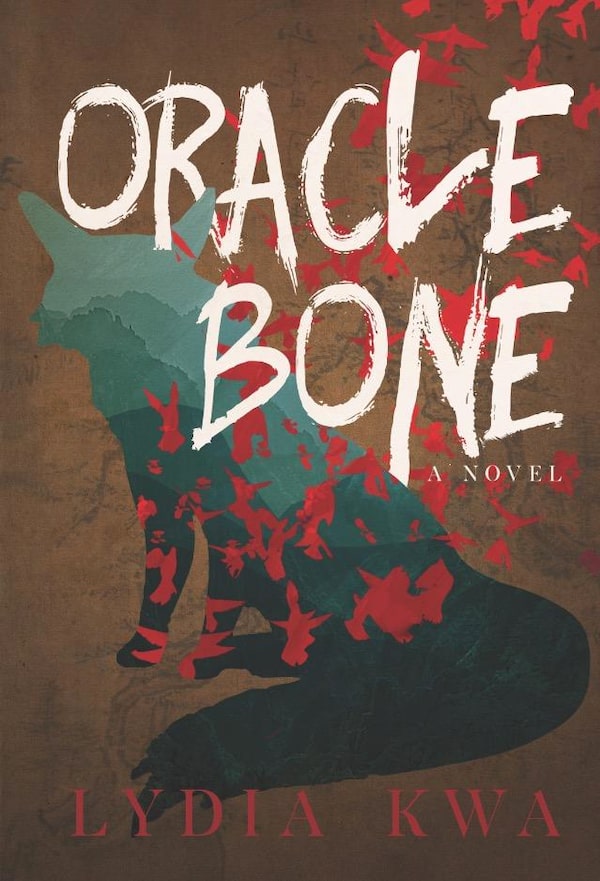
Handout
Often novelists express their desire to edit their earlier work even as they acknowledge that constant revision would mean no new books. Rarely does a novel find both reason and opportunity for a second life.
When Lydia Kwa first published what we can now call “The Walking Boy 1.0,” she had no idea it would be the second book in a trilogy or that she would rewrite it over a decade later. The story of The Walking Boy’s second life is one of editorial inspiration, Canadian publishing industry woe and, finally, artistic renewal.
Its first life was with Key Porter Books, published in the fall of 2005, shortly after founder Anna Porter sold her controlling interest in the company to H.B. Fenn. Kwa remembers “a lot of transitional challenges due to this changeover, and I wondered how these would affect my book.” When H.B. Fenn declared bankruptcy in 2011, the rights to two books Kwa published with Key Porter reverted back to the author.
The Walking Boy’s story might have ended there, but after publishing her 2013 long poem, sinuous, Kwa was at a literary loose end, asking herself what came next. It was then that she returned to the idea that Janie Yoon, her former editor at Key Porter (today, associate publisher at House of Anansi), suggested: The novel should be expanded to a trilogy.
Although she was initially skeptical, by 2013, the idea had grown on her. “I convinced myself I’d try to write a prequel, see what happens.” That prequel, 2017’s Oracle Bone, found a home with Vancouver’s Arsenal Pulp Press, as did a new edition of Walking Boy, now the second book in the series, published in March, 2019. Kwa is currently working on the third book in her chuanqi trilogy. The term chuanqi means “to transmit the strange.” Both Oracle Bone and The Walking Boy might remind readers of magical realism, but they in fact hark back to this older Chinese literary tradition of chuanqi tales involving the supernatural, fox spirits, ghosts and demons.

Set in early eighth-century China during the final year of the reign of Wu Zhao, The Walking Boy picks up 38 years after where Oracle Bone left off. The novel centres on many of the same characters, including Wu Zhao (the first and only “Female Emperor” in China’s history), monk Harelip, Abbess Ling, and sculptor Ardhanari, as well as two new additions. The backdrop is the western capital of Chang’an (today known as Xi’an), at the time one of the largest cities in the world.
In The Walking Boy as in Oracle Bone, Kwa nods to classical Chinese literature while also subverting some of the chuanqi tale’s conventions, particularly the form’s more misogynistic aspects. “It is also more than that, being a queer-centred novel,” she says. All her main characters, including Wu Zhao, are misfits in some way. The novel’s epigraph, two lines from a poem by Nagarjuna, suggest to Kwa the need to not only “transmit” but embrace the strange – as part of reality and as part of ourselves:
Without intuiting the sublime,
You will not experience freedom.
“When we are able to intuit the sublime, we have a certain kind of expansive view of ourselves and others and our connections to one another. This grants us a freedom we couldn’t have otherwise, because our minds aren’t stuck in artificial separations.”
The taking of artistic convention and turning it to one’s needs is in fact a theme in The Walking Boy. Characters revisit an earlier artist’s work, adopt a “new attitude” or break convention in an artistic form. Asked whether this refashioning is intrinsic to creativity, Kwa says: “It is certainly true for me. This kind of attitude is central to my creative endeavours. Writing or doing visual art are ways of responding to what has come before or what is in front of me; these are essentially practices of transformation as well as engaged conversation.”
Much had to change for The Walking Boy’s 2019 edition. “That’s because Oracle Bone happened, and I needed to approach The Walking Boy as now altered and in conversation with Oracle Bone.” Being in conversation meant introducing narrative echoes that weren’t in the original version of The Walking Boy, although it still works as a stand-alone novel.
“As well, my writing style has evolved since the 2005 version,” she adds. “I wanted the language in this new version to reflect that.” Some of these revisions include the translated Chinese poems throughout the novel, as well as one character’s poetic responses to those poems. “Now it truly feels like a second book in the trilogy.”
Expand your mind and build your reading list with the Books newsletter. Sign up today.